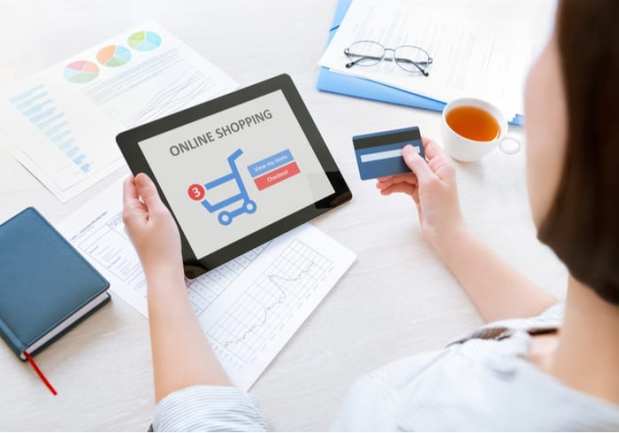How eTailers Level Up Their Checkout Game

To prevent consumers from leaving their carts behind before they pay, businesses need to have strong online checkout processes that convert online shoppers into customers. The aim is to head off the real and pertinent issue of checkout abandonment, which, according to some estimates, happens to a staggering share of eCommerce carts.
Some estimates say almost seven in 10 — or 69.6 percent — of all online shopping carts end up deserted, according to the latest PYMNTS Checkout Conversion Index. And that calculates to lost eCommerce sales of $260 billion because shoppers don’t hit that buy button and complete their purchases. The pressure is on enhance and streamline online checkout processes with so much in the balance.
From Amazon to Shopify, tech companies and eCommerce retailers are adopting features to up their checkout games (and presumably improve conversions in the process). These are just some of the functions companies are employing to help bolster their checkout processes on eCommerce websites.
All — or 100 percent — of the top 30 merchants in Q2 2018 offered product ratings, reviews and recommendations. Google Shopping, for instance, has been redesigned and users can read reviews or watch video content on certain products and they can filter by brands or items. The example given by Google was a shopper looking for a set of new headphones filtering for attributes like “wireless” or a brand like “Sony.” At the same time, news surfaced that the new shopping experience would include the insertion of a little blue shopping cart logo. The company noted per reports that it would “show shoppers they can seamlessly purchase what they want with simple returns and customer support, backed by a Google guarantee.”
All — or 100 percent — of the top 30 merchants in Q2 2018 offered rewards. Through the Uber Rewards program, for instance, riders in the U.S. earn points for their Uber X, Premium and Pool rides along with Uber Eats purchases. Passengers earn 1 point for every $1 they spend on Uber Pool as well as Uber Eats, and earn 2 points for every dollar they spend on Uber X. Riders who reach certain thresholds then meet levels such as gold, platinum and diamond. The latter tier, in one case, offers customers who earn a minimum of 7,500 points free Uber Eats delivery on three orders. This tier of riders also attains “special access to highly rated drivers” as well as complimentary upgrades in addition to “premium support.”
Nearly all — or 98.7 percent — of the top 30 merchants in Q2 2018 offered free shipping. And shipping methods through eCommerce retailers are becoming faster: Amazon, for instance, plans to invest $800 million during Q2 to make delivery speed for Prime members one day instead of two. One-day delivery is an option on some goods as of now. Amazon Chief Financial Officer Brian Olsavsky said in response to a question from an analyst, “We have been offering obviously faster-than-two-day shipping for Prime members for years — one day, same day, even down to two-hour delivery for Prime Now — so we’re going to continue to offer same day and Prime Now morphing into, or evolving into, a free one-day offer.”
And 95.3 percent of the top 30 merchants in Q2 2018 offered live site help. Technology companies are rolling out new services to condense business conversations and tasks into one place: Shopify, in one case, rolled out a new mobile app dubbed Shopify Ping per reports last year. Merchants can manage tasks through messaging without needing to switch between apps and tools through the tool. Shopify Director of Product Michael Perry said in an announcement at the time, “Shopify merchants are conducting many business conversations across multiple apps every day, not only to run their day-to-day operations, but also to manage customer inquiries. Shopify Ping was created to make all of this easier to manage.” Perry added, “It’s a one-stop messaging app that lets them spend more time on what matters most — running their businesses seamlessly and deepening customer relationships.”
Nearly eight in 10 — or 79.3 percent — of the top 30 merchants in Q2 2018 offered guarantees or refunds. Pet Plate, for instance, has a money-back guarantee if a dog isn’t satisfied with the company’s pet food on the first try. Consumers enter the company’s conversion funnel by clicking “start now” or “see plans or pricing.” They are then taken into a flow that asks various questions about their dog (such as breed or birthdate, according to the website). The site will then find the appropriate number of calories for a dog via an algorithm on the back end and will suggest a plan based on how much food a dog needs.
From Pet Plate to Google, eCommerce retailers and technology firms are using features at checkout that could help drive conversions. And, with checkout processes slowly homogenizing and features that were rare becoming common, it is more important than ever that retailers approach their checkout processes strategically to maximize their conversion rates.
